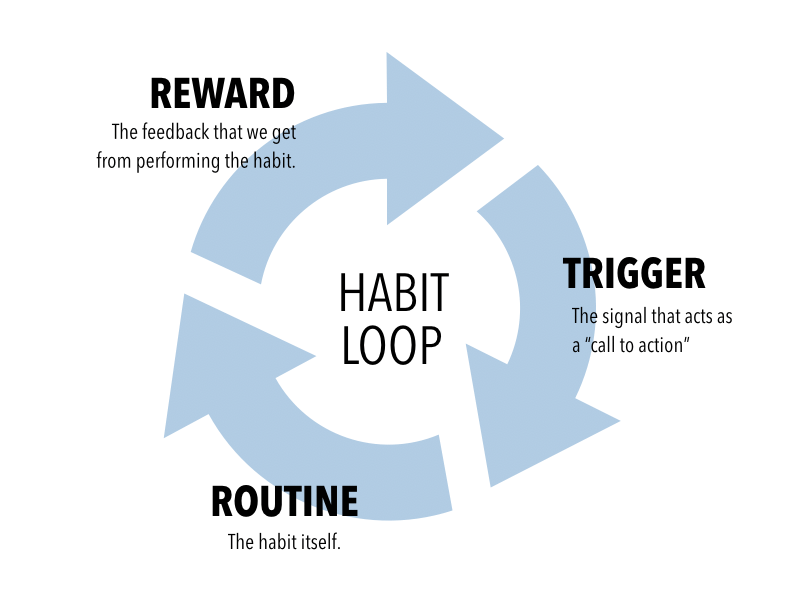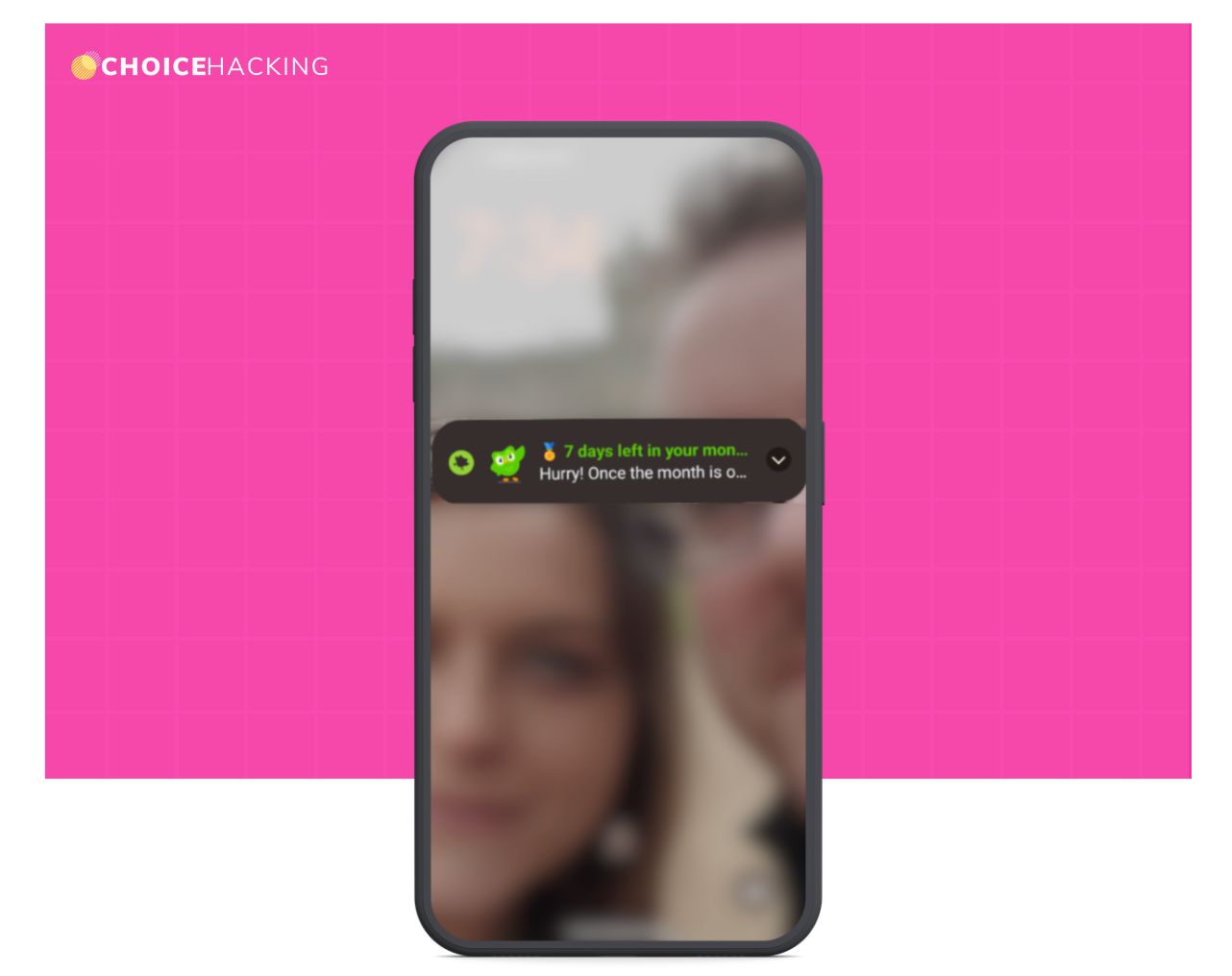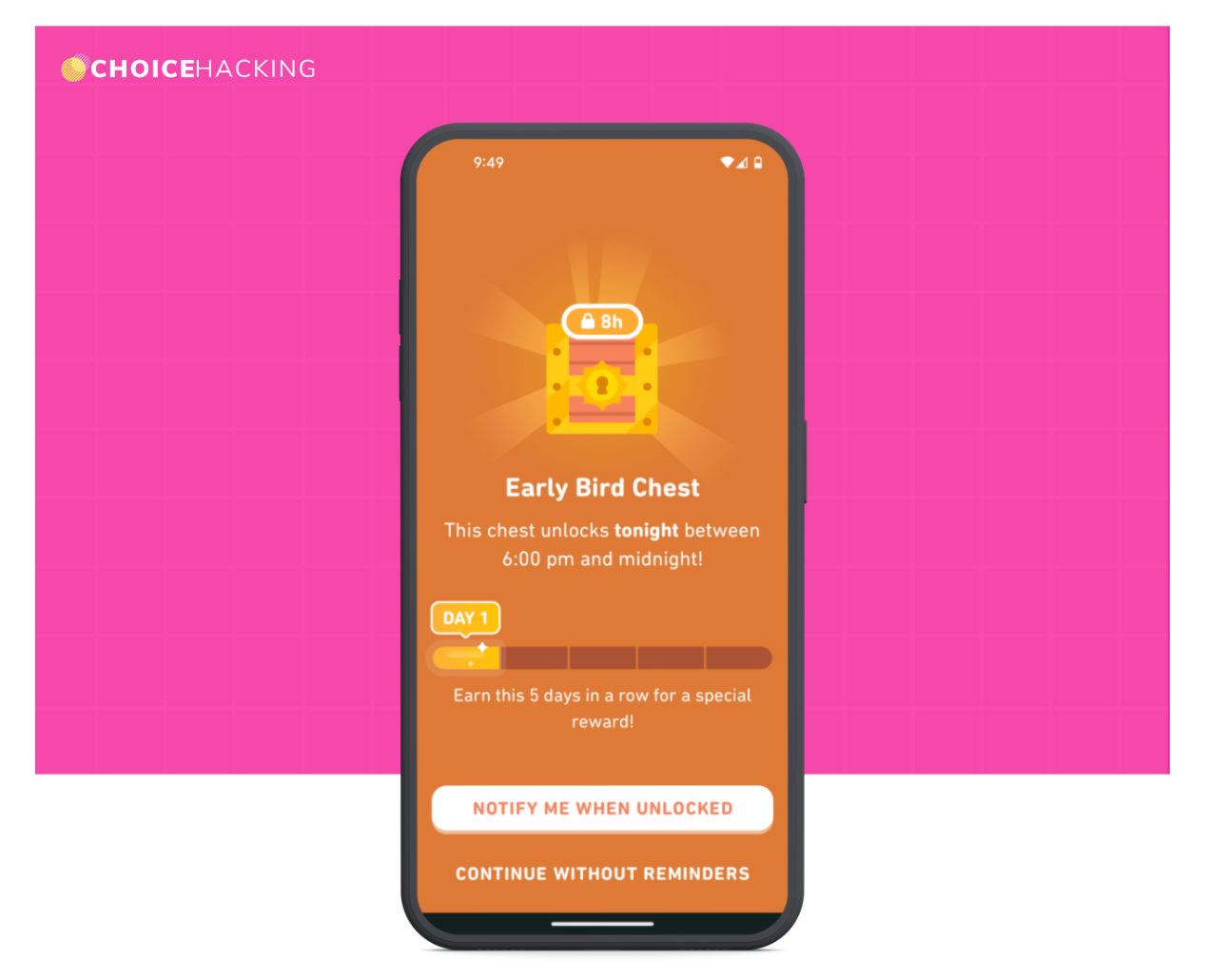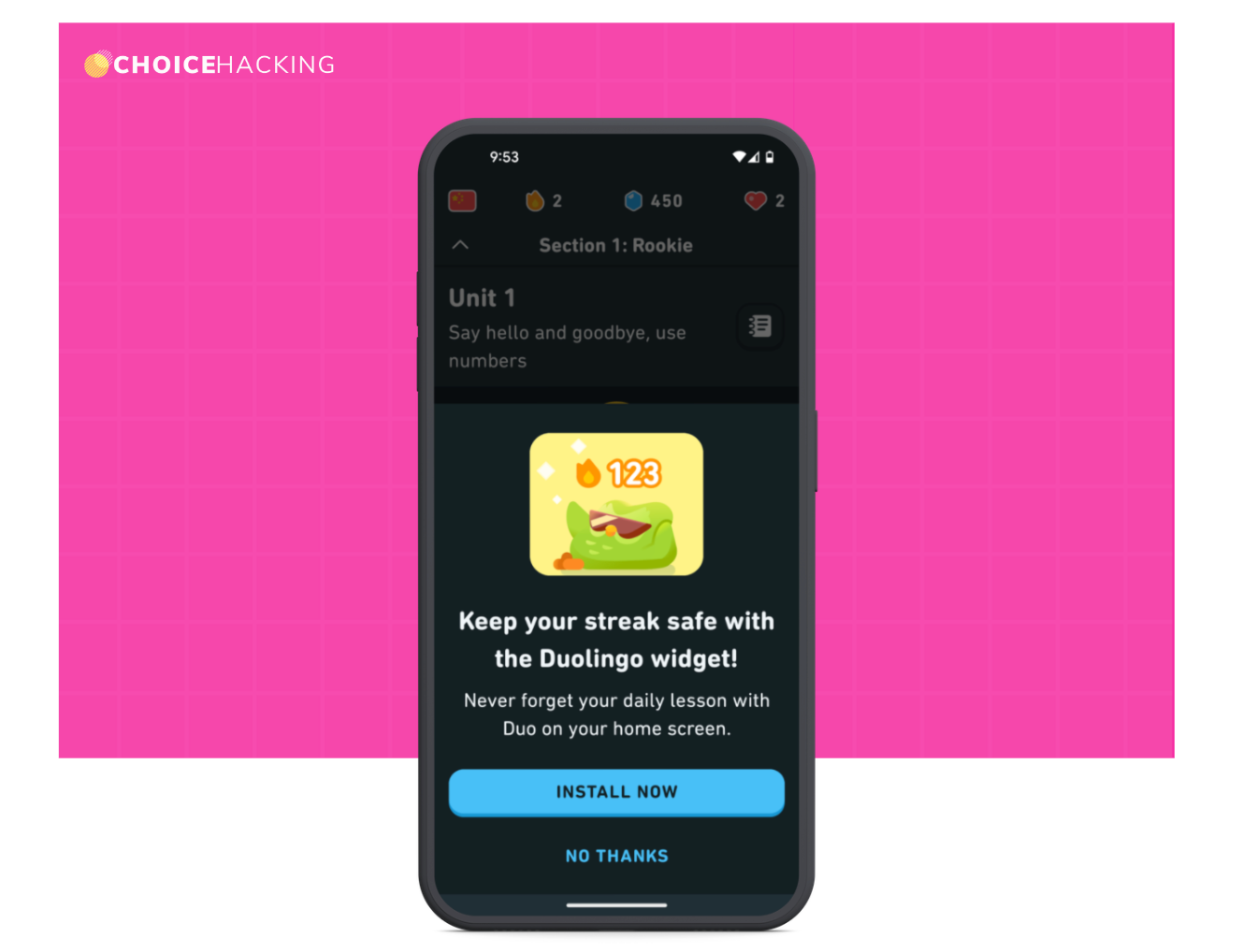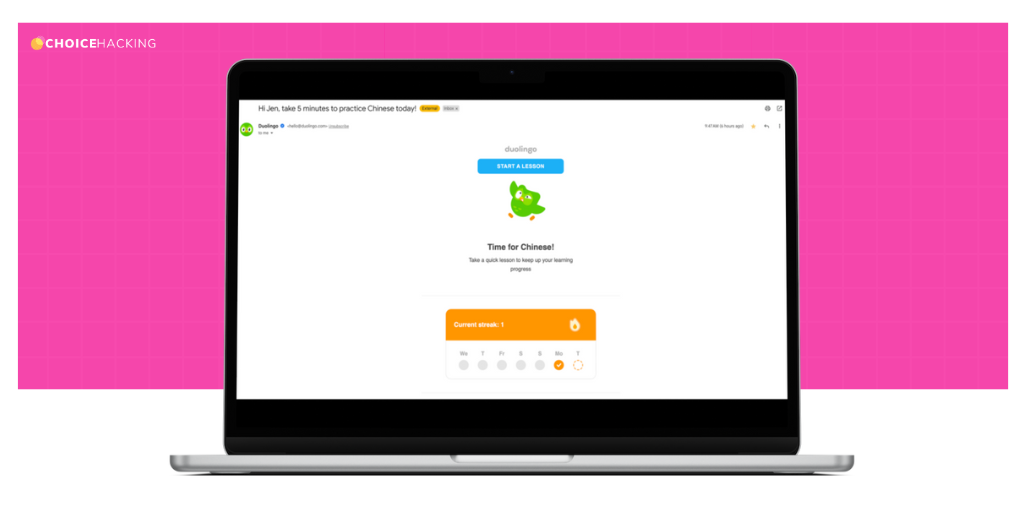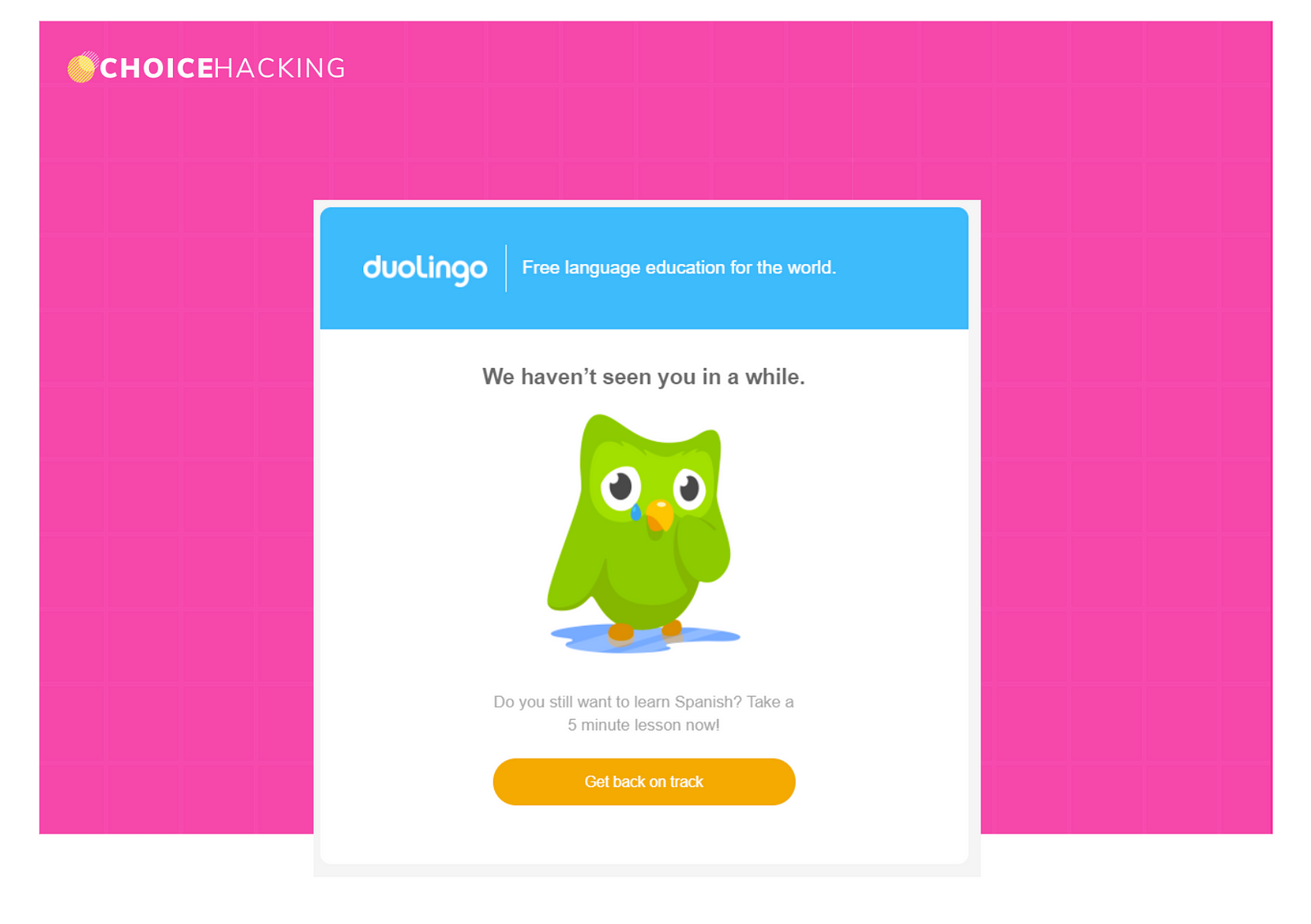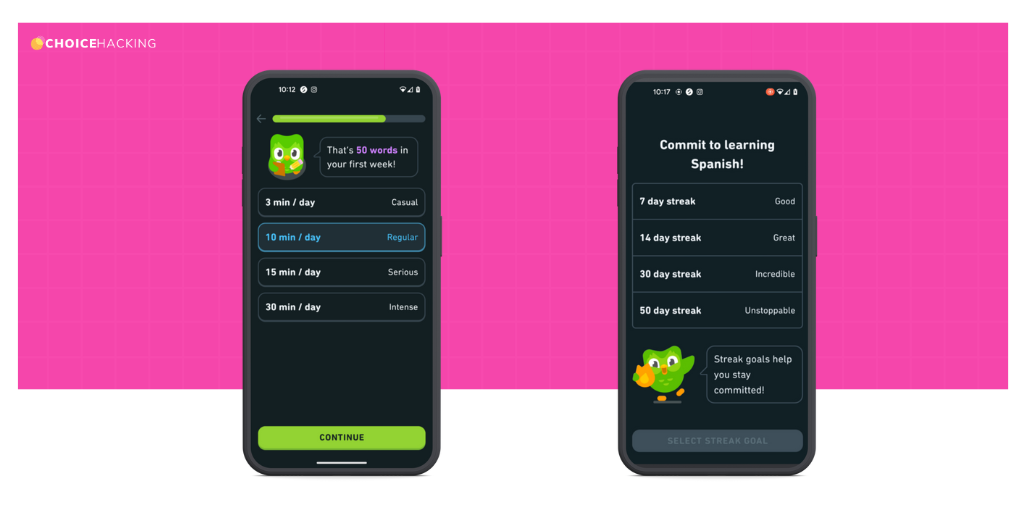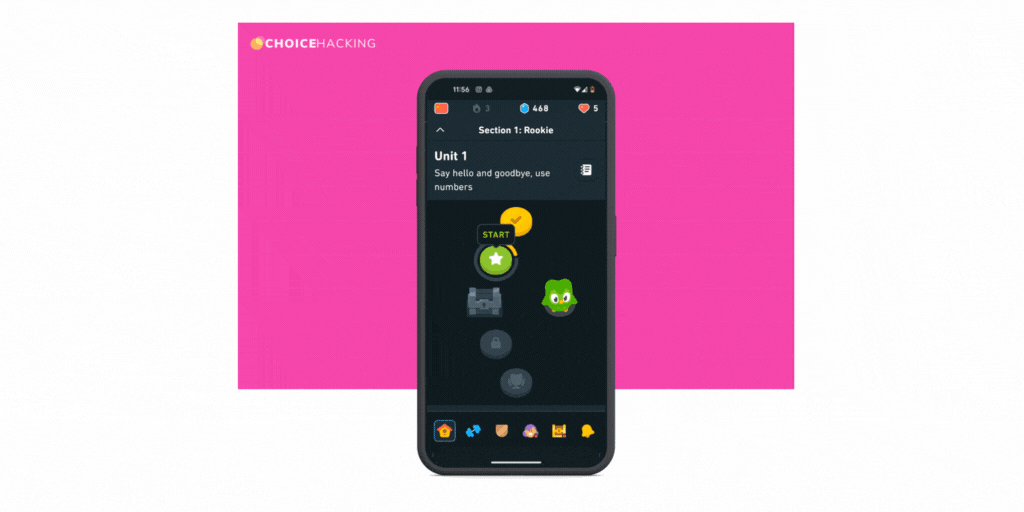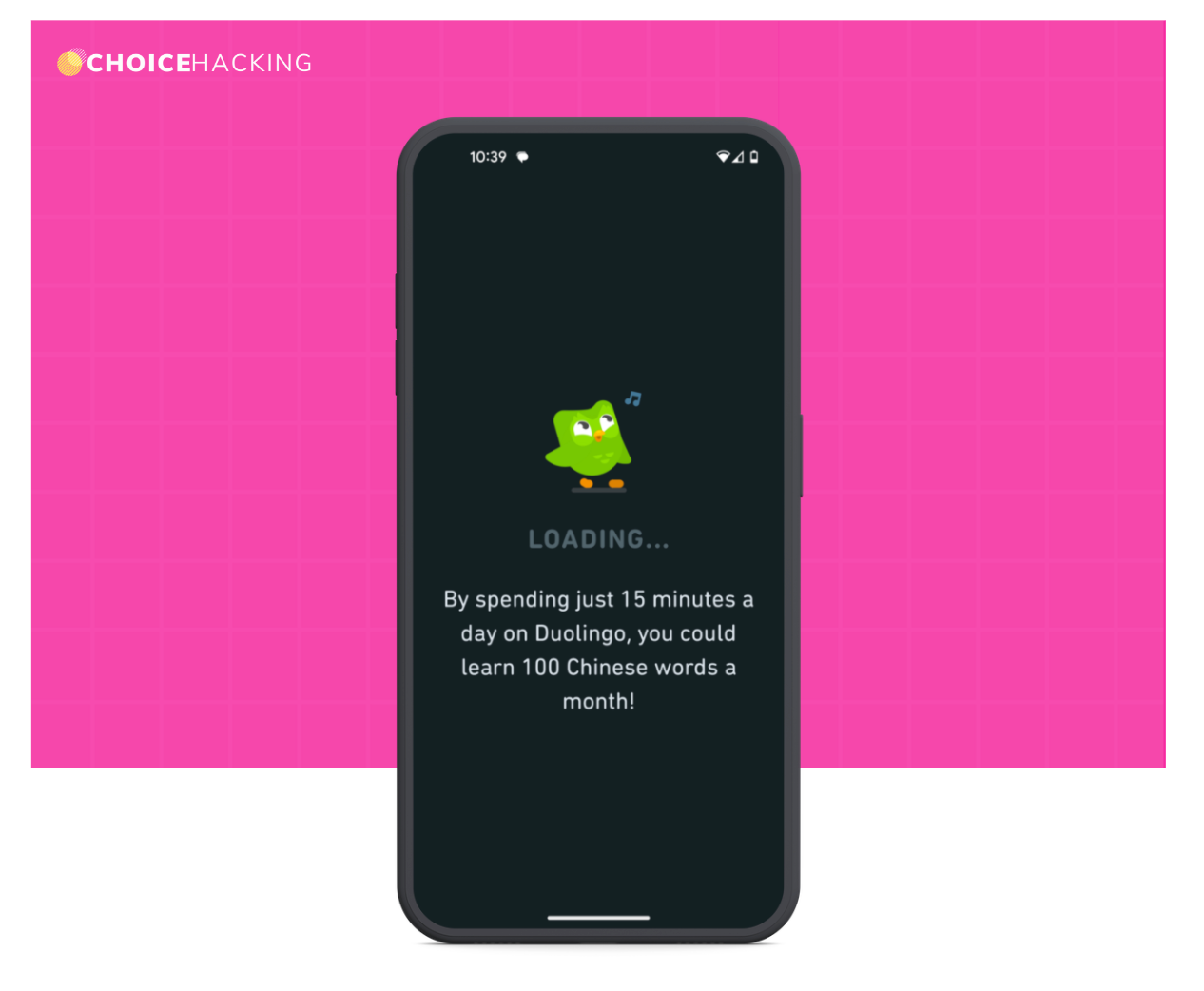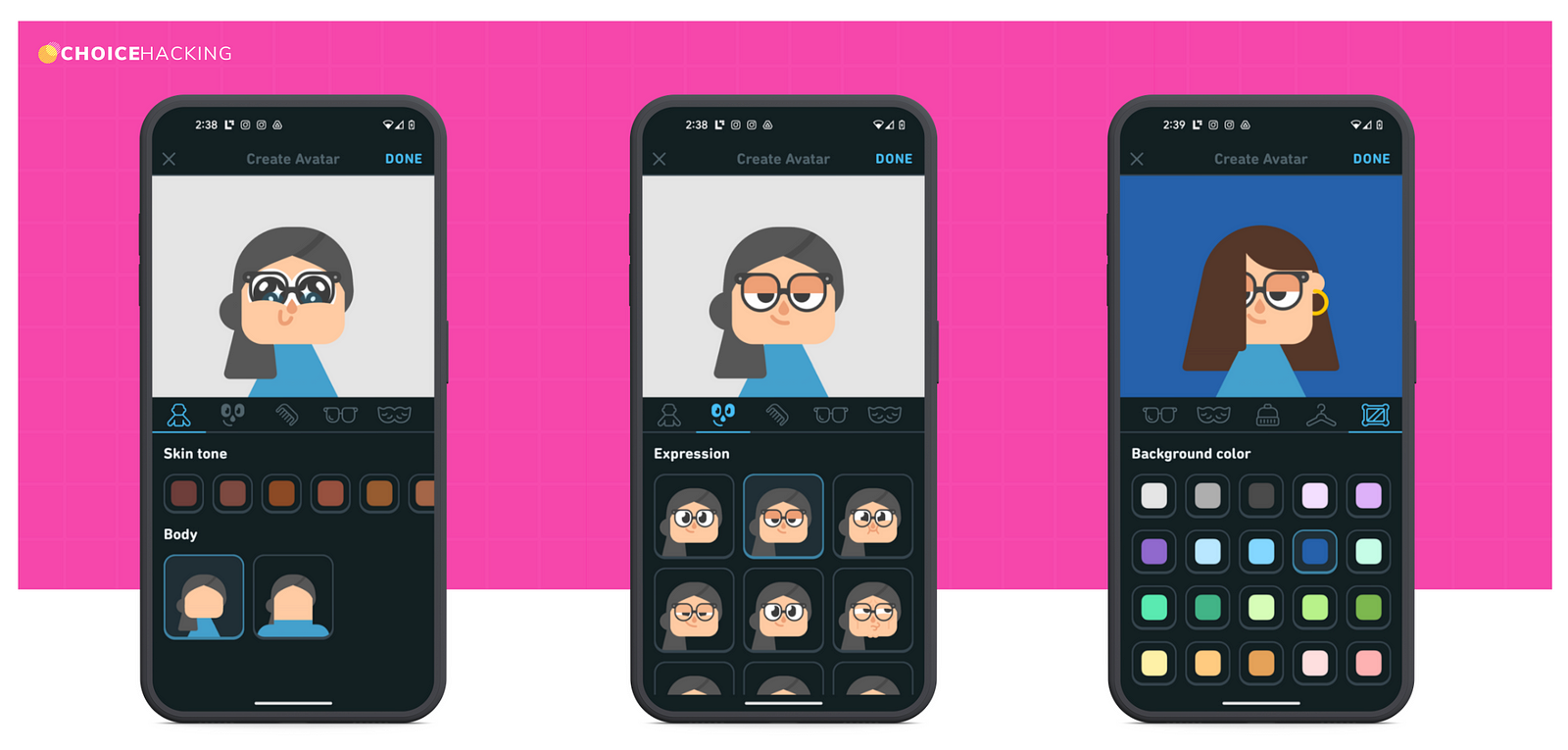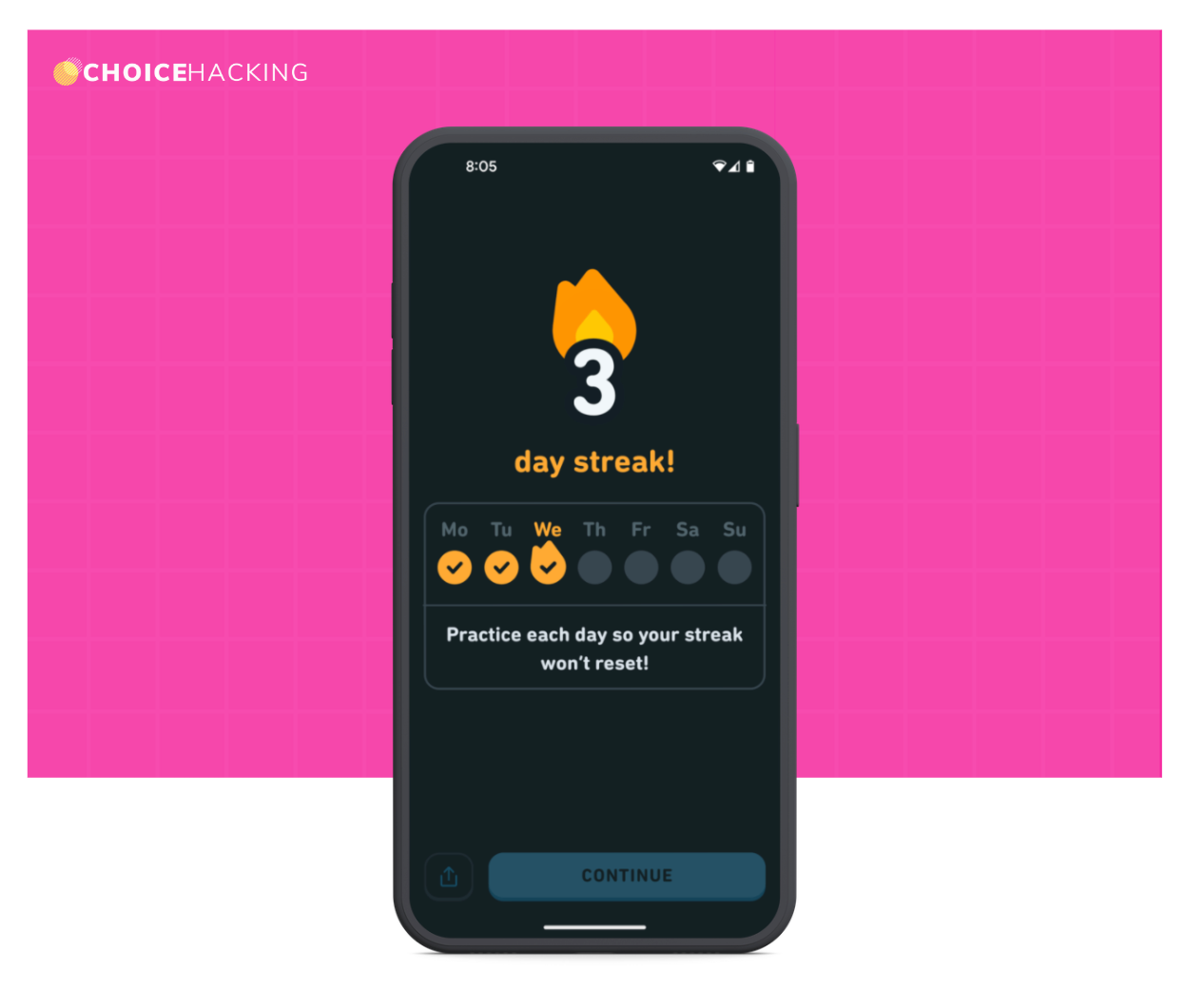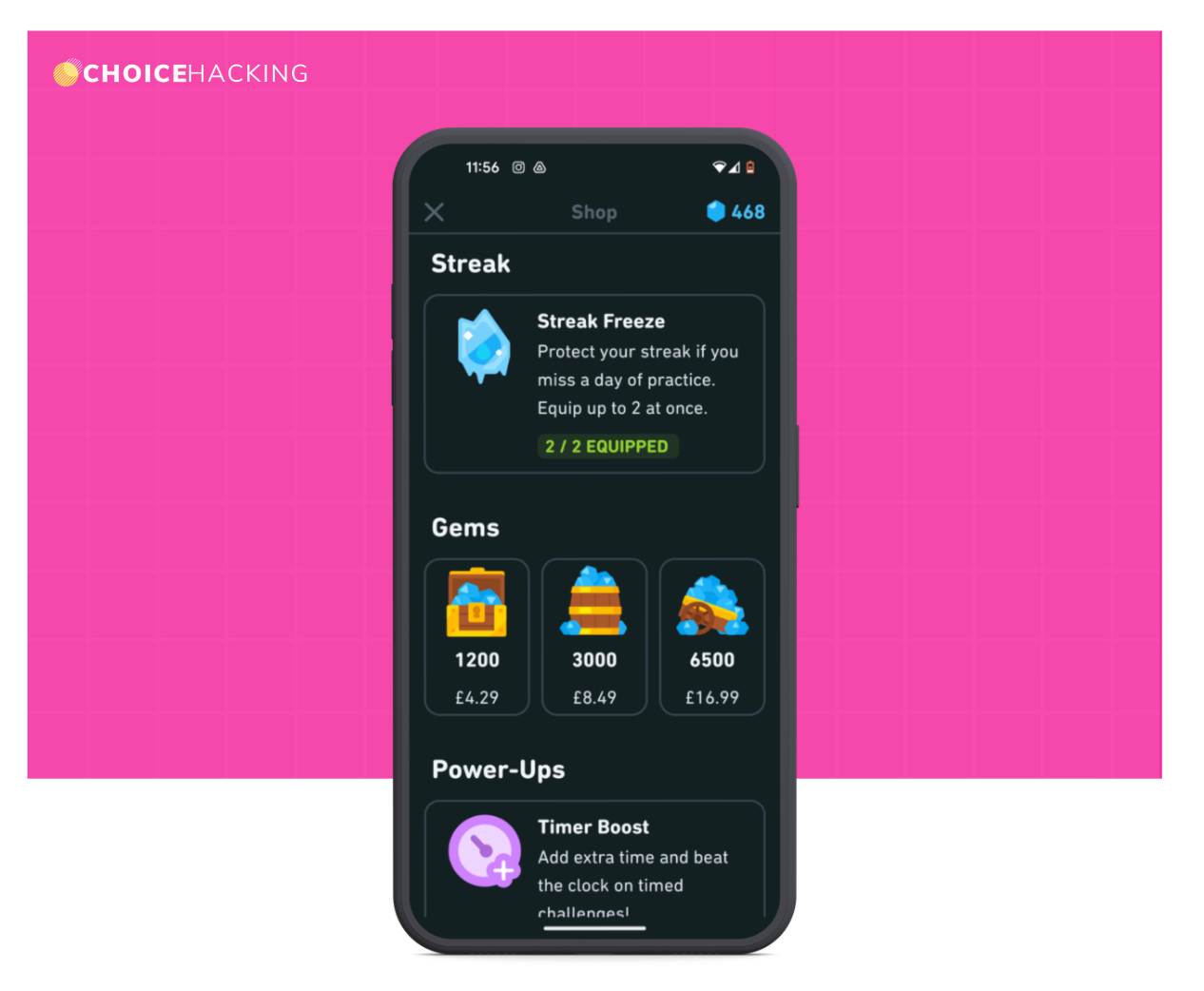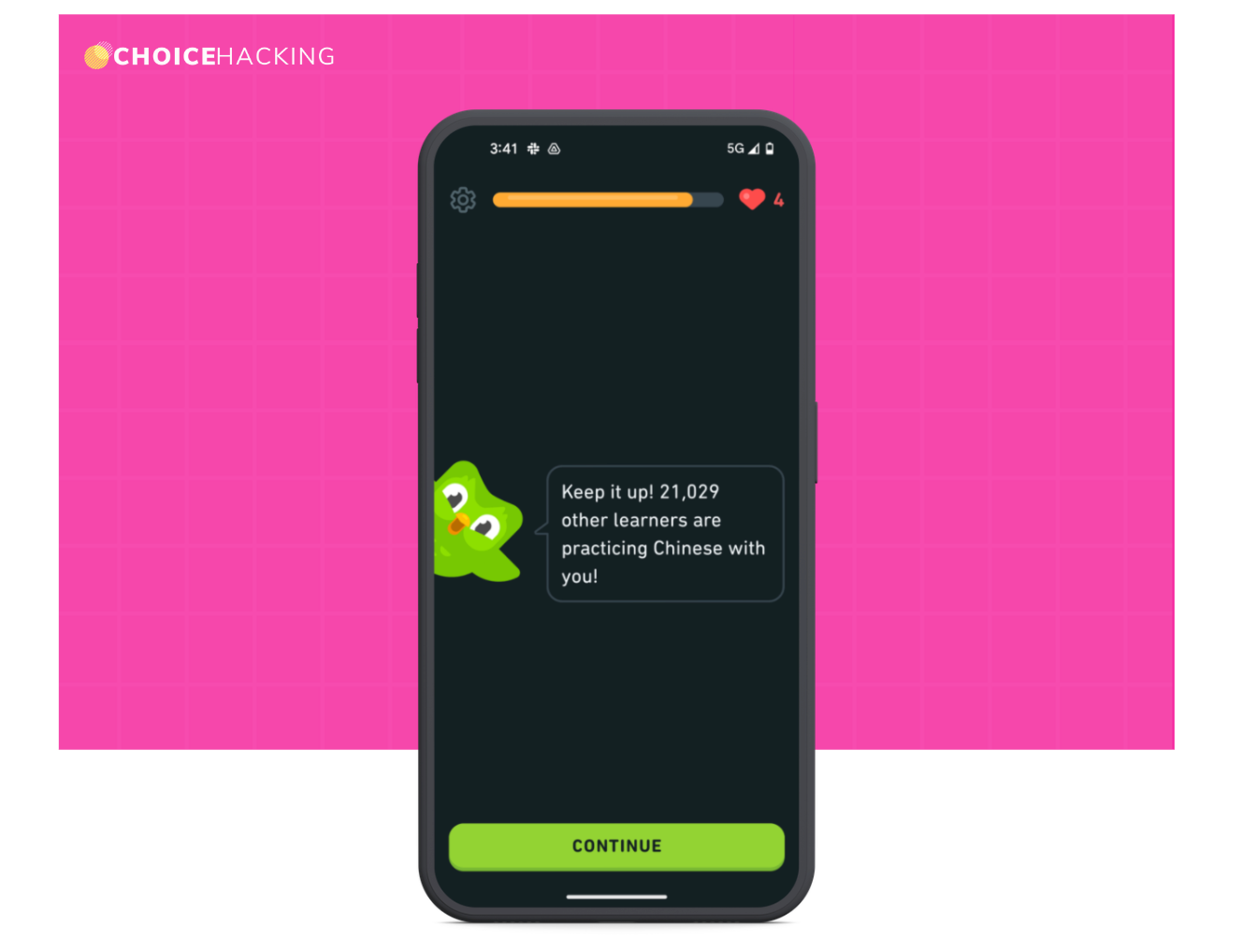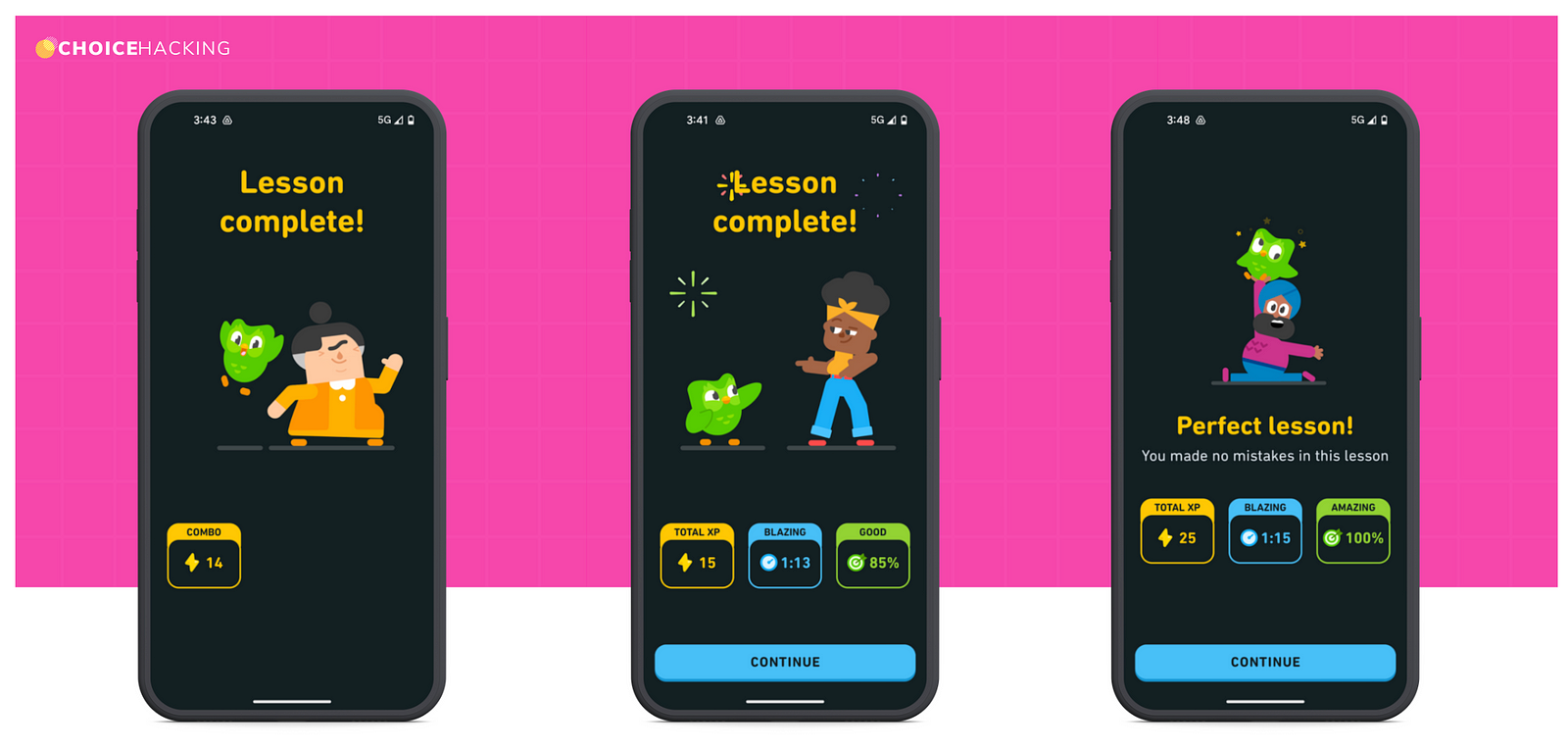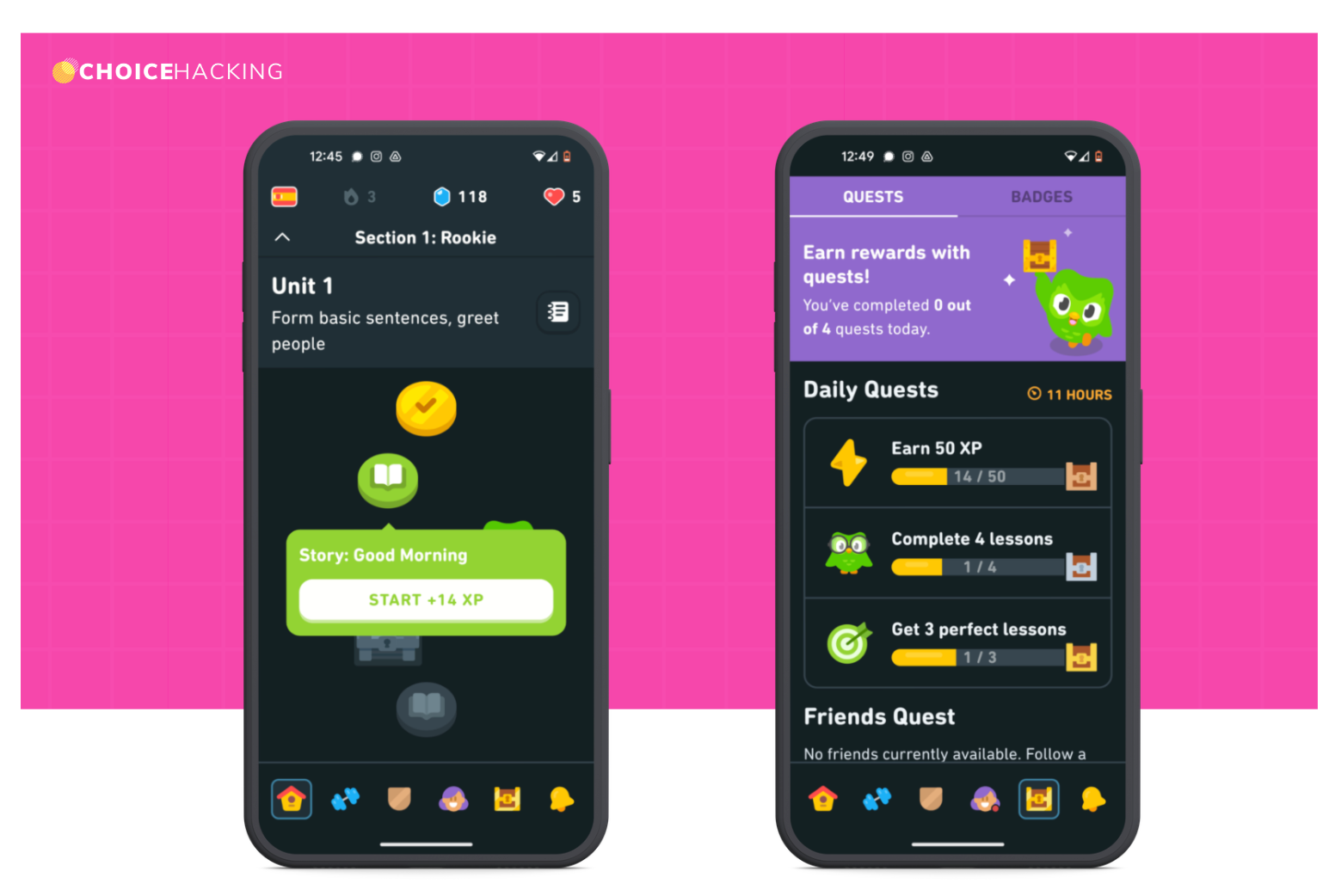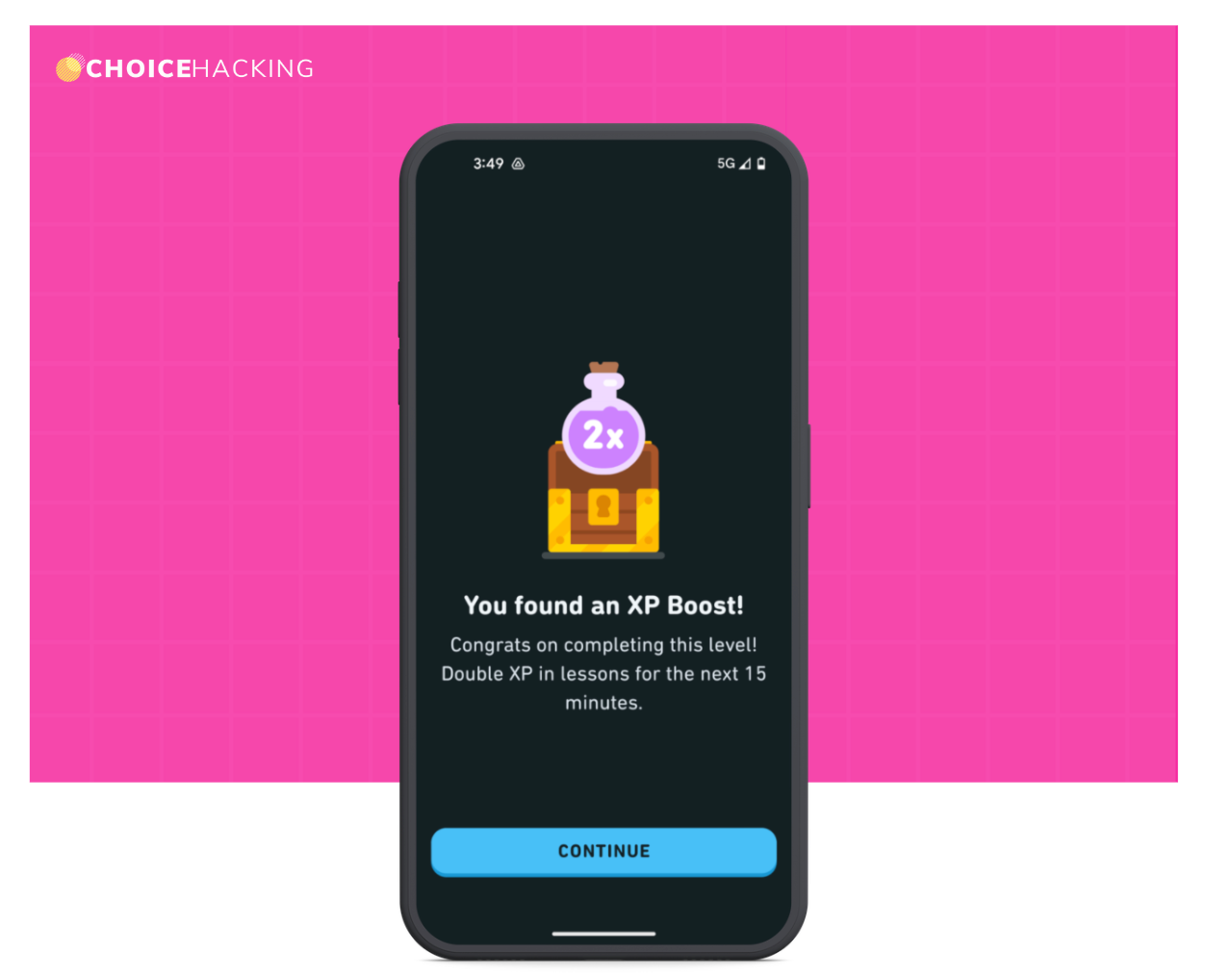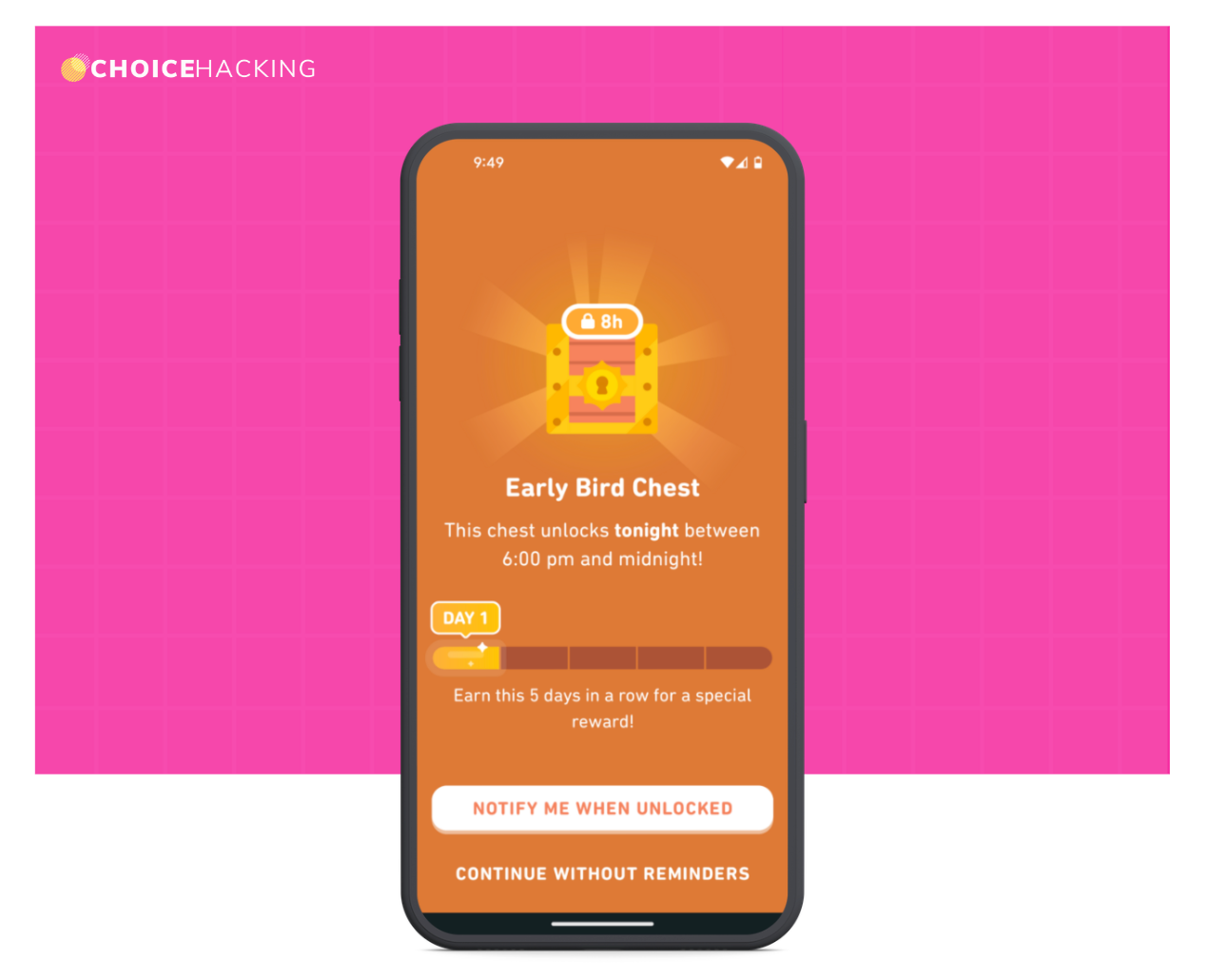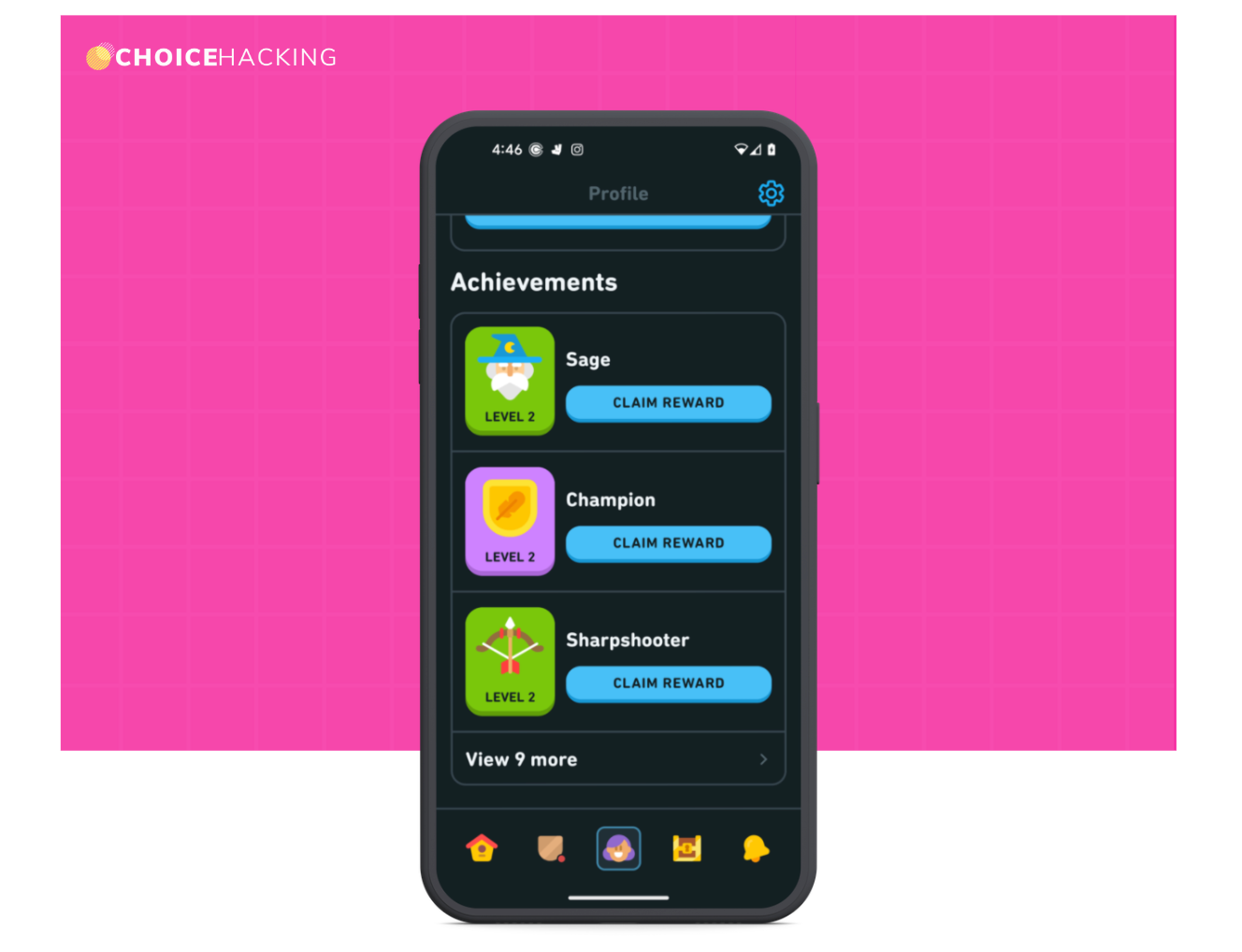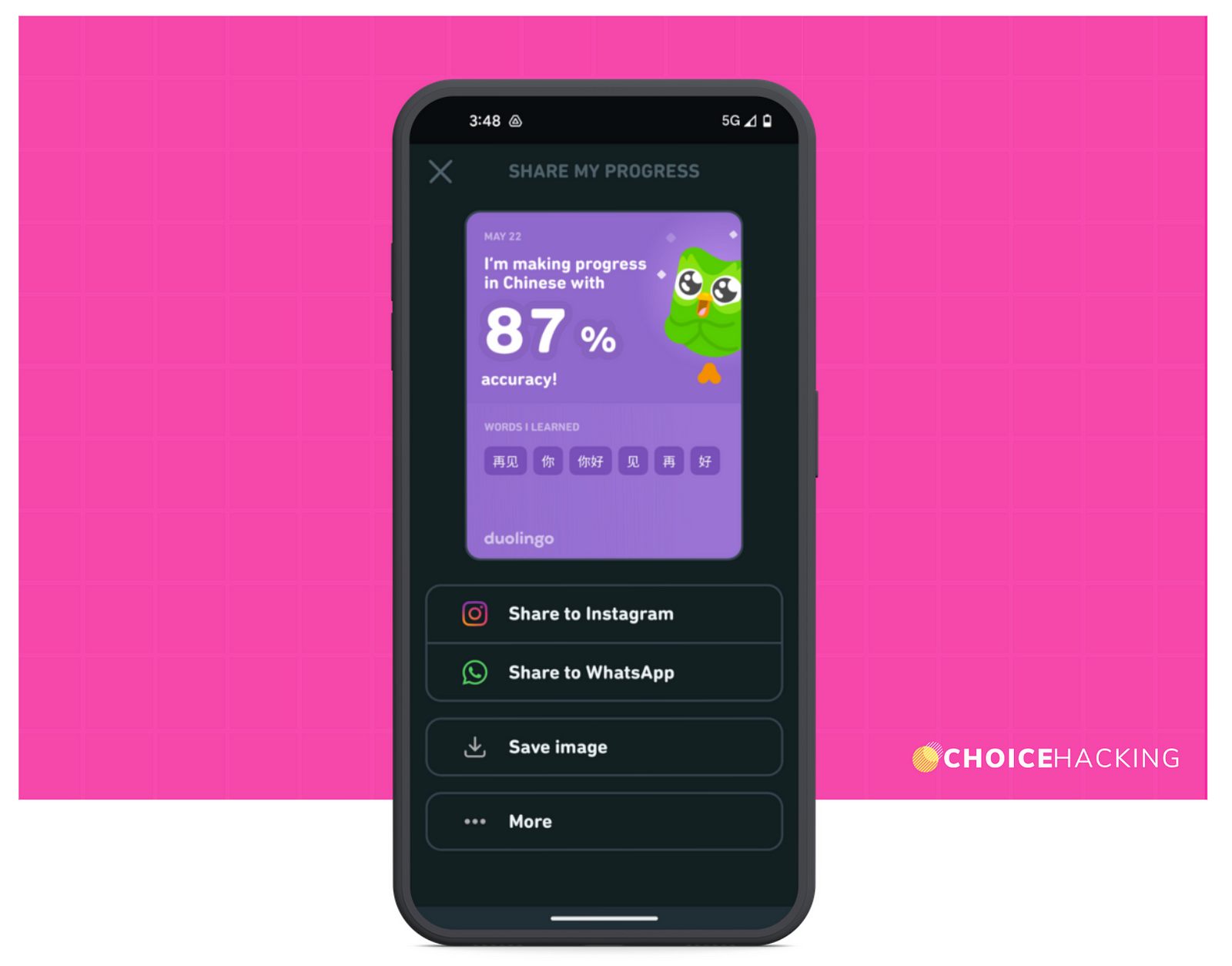Duolingo is one of the world’s most successful learning-based businesses. In 2022, it made nearly half a billion dollars in revenue (a 46% increase from the year prior) and had 16.3M daily active users.
Maybe its success isn’t surprising — there are lots of reasons to want to learn a new language:
- Maybe you’re planning a trip abroad
- Maybe you’d like to improve your job prospects
- Maybe you were inspired by a popular movie or show
But here’s Duolingo’s big challenge:
It’s easy to be excited about starting a learning journey. But it’s much harder to stick with learning than most people think. A recent study by the Massachusetts Institute of Technology (MIT) found that online courses only have a 4% retention rate. But Duolingo has been remarkably successful keeping people engaged with digital learning. They boast a daily active user retention rate of about 55%.
Why?
Because they use psychology and behavioral science to keep us learning.
How the Duolingo App Makes Learning a Habit
Habits are actions performed without conscious thought — like grabbing your morning cup of coffee or going to the gym every day after work. There’s no overthinking or self-negotiation. You just do it.
That’s why turning an app into a habit is the holy grail for every digital business — and Duolingo has managed to do for millions of users. To understand how, we first need to understand the mechanics of a habit.
The “Habit Loop” describes the basic structure behind every habit.
Habit Loops consist of three parts, and all three parts must be present to create a habit.
- The trigger (or cue)
- The routine
- The reward (or feedback)
How Duolingo uses psychology to create “triggers”
Triggers, also called cues, signal that it’s time to perform a habit. For me, waking up every morning triggers a craving for a cup of coffee — not because I want one but because it’s something I do every morning.
(If you want to read more about the five types of triggers, check out my dedicated post here.)
Duolingo uses several triggers to get you to open the app:
- Push notifications & widgets
- Email reminders
- Emotional manipulation
1. Push notifications
One of the most common ways apps can trigger habits is by using push notifications. Especially those that pull psychological levers like Scarcity, Loss Aversion, or Commitment & Consistency.
But there’s a big hurdle for push notification triggers. Users have to give apps permission to send them notifications.
While most other apps just ask nicely, Duolingo rewards users for allowing notifications. In this case, with a rewards chest that will unlock at some point between 6 pm and midnight.
Duolingo asks if they want to be notified when the chest unlocks. It’s a win-win strategy: users get a little reward, and Duolingo gets to send them push notifications.
Another clever way Duolingo encourages triggers is through the fear of breaking a daily streak. They serve messages like the one below to encourage you to put a home screen widget on your phone so Duolingo is more visible (and you’re more likely to start your lesson).
2. Email reminders
Duolingo knows that if users won’t respond to a push notification that the inbox is the next logical place to send a trigger. Their emails are simple, effective, and include:
- Actionable subject lines with concrete language: “Hi Jen, take 5 minutes to practice Chinese today!”
- Simple layout with a clear call to action: “Start a lesson”
- Personalized streak information to push users to act before they break their streak: “Current streak: 1”
3. Emotional Manipulation
Duolingo is famous for its owl character named Duo. He’s got quite a personality (as well as a sometimes NSFW crush on singer Dua Lipa).
He’s an adorable mascot that the brand uses to manipulate its users' emotions and actions. For example — if you don’t use the app for a while you’ll start to get emails with subject lines like:
- “You made Duo sad 😢”
- “Keep Duo happy”
Although they appear to have toned down the emotional manipulation after some user push-back and memes, it’s hard to ignore messages like this one:
While I don’t recommend guilting your users into coming back, clearly, this strategy works for Duolingo.
How Duolingo uses psychology to create “routine”
The routine is the habit itself. My morning coffee routine includes washing out my favorite mug (even if it’s clean), making espresso, frothing milk, and stirring in half a teaspoon of sugar.
Duolingo’s customer experience is full of psychological strategies that get people hooked on the “routine” of learning a language, including:
- Pre-commitment
- Social motivation
- Goal Gradient Effect & Chunking
- Fixed Rewards: XP and Questions
- Variable Rewards: XP Boosts
- Streaks
1. Pre-commitment
Pre-commitment is a motivational strategy that gets people to promise to do something in the future. Research shows that we feel the need to stay consistent once we’ve made a commitment (and are even less likely to procrastinate). The more specific and actionable a pre-commitment is, the more likely we are to follow through.
Duolingo asks users to make a specific pre-commitment to a learning goal before taking their first lesson. As you can see in the image below, during onboarding, users are asked to commit to a daily time goal (left).
Later (right), they’re asked to commit to keeping up a daily streak goal. Streaks are when people use the app at least once a day.
If you want to include pre-commitment in your engagement strategy, follow Duolingo’s example by creating specific and actionable goals. For example:
❌ Don’t say: “Do you want to exercise at all/more/much more?”
✅ Do say: “Do you want to exercise on your Peloton bike 3, 5, or 7 days a week?”
2. Social Motivation
Social Motivation, also known as competition, has been shown to increase physical effort during a workout, adherence to healthy habits, and even reaction times.
Duolingo uses competition in the form of a leaderboard. Once you’re high enough on a particular board, you start graduating into high and higher leagues. There are lots of leagues to keep users engaged — and even a Diamond Tournament for the app’s most active users.
Competition using leaderboards is a proven way to keep users engaged, but it’s not a great fit for every type of experience.
For example, an app that tracks days of sobriety or days without a cigarette is probably not a good fit because the stakes of falling down the leaderboard are too high. The risk of failing in “public” could do more harm than good.
Carefully consider whether including competition in your experience is the right thing for your users, their goals, and your brand.
3. Goal Gradient Effect & Chunking
Keeping users engaged isn’t just about giving them rewards and promotions. It’s also about making their progress clear (including how much they have left to learn).
The Goal Gradient Effect says that users are more motivated by how much they have left to go, not what they’ve accomplished so far. It’s why when you go to a coffee shop and they give you an extra loyalty stamp, you’re even more motivated to “earn” your free coffee.
But how does this work for language learning?
Duolingo takes a big amorphous cloud of knowledge and breaks it down into digestible topics and subtopics. These components create a path with a clear beginning and end:
Breaking down information this way is called chunking, and it makes complex sets of information easier to learn and remember.
Showing learning as sets and subsets of learning isn’t the only way Duolingo uses chunking — it also shares messages that chunk down learning into concrete steps (supported by user data) that make a sometimes overwhelming task seem more manageable.
4. Personalized Avatars
Personalized Avatars are an effective way to keep users engaged in an experience — especially one that allows the avatar to evolve as you level up in an experience.
Our brains are hardwired to pay more attention to information that’s relevant to us (Self-reference Effect) or personalized (Cocktail Party Effect), and custom avatars accomplish both.
As you continue using Duolingo, more options are added, and you can continue to customize your avatar’s look and feel. This “co-creation” gets users more emotionally involved with their progress and leverages psychological principles like the Endowment Effect, the IKEA Effect, and Sunk Cost Fallacy.
5. Streaks
Duolingo streaks keep track of how many days in a row you’ve practiced your language of choice. Each time you open Duolingo, you’re reminded of the length of your streak so far. This motivates you to keep learning every day so you don’t break your streak.
But streaks do have a downside - breaking them can be emotional and discouraging for users, causing more harm than good.
(For example, I personally struggled after breaking my Peloton exercise streak. After 112 weeks of exercising at least once, a broken toe forced me off the bike and I’ve struggled to get a streak even 1/3 as long.)
That’s why Duolingo gives users the ability to freeze a streak. Meaning they can miss days but not break their streak, so long as they’ve earned a freeze by learning enough days in a row.
6. Social Norming
Social Norms are the behaviors and beliefs that are considered normal in a society. We all, on a subconscious level, look to the actions of others to feel better about our behavior. Duolingo knows that, so they make sure to share stats about how many people are learning alongside the user.
But a word of warning about Social Norms. They can backfire depending on how they’re framed.
For example, if you were trying to reduce the number of college students binge drinking on the weekends, you might create a campus flyer that says something like, “40% of students binge drink every weekend. Don’t be one of them.”
On the surface, that seems like a good idea. But subconsciously, it could be telling students that a lot more people binge drink than they thought, so it’s actually an acceptable social norm.
But if we flip that statistic and tell students, “60% of college students never binge drink,” the social norm suddenly becomes “people who binge drink aren’t ‘normal.’”
7. Social Proof
When something feels like a risk (or a pain in the rear end) people look to the actions of others to make themselves feel better about a decision.
Duolingo knows how powerful Social Proof can be, so it makes sure to share its impressive user statistics whenever possible.
How Duolingo uses psychology to create irresistible “rewards”
Rewards are the payoff you get from performing your habit. For example, my morning coffee habit gives me a quick boost of caffeine, fat, and sugar that my body craves (for better or for worse).
Duolingo includes a variety of rewards in its experience that make every correct question feel amazing — kicking up a little dopamine, the feel-good hormone in your brain).
Here are a few of the ways they reward users:
- Celebrations
- XP & Quests
- XP Boosts & Chests
- Achievements & Badges
1. Celebrations
Whenever users successfully complete a lesson, Duo the Owl and another character do a little celebratory dance. It’s a small thing, but celebrating little wins can make a massive difference in user engagement and retention.
This strategy takes advantage of a cognitive bias known as Confirmation Bias. It says that we’re more receptive to information that conforms with our existing beliefs. We get a subconscious buzz when we hear or see things that support our pre-existing beliefs or actions.
So when users complete a lesson and see a cute character doing a dance, they not only feel pride for completing the lesson. They’re also getting a bit of positive information that confirms that their actions (learning a language with Duolingo) are correct.
2. XP & Quests
Continuous Rewards are a gamification tactic that gives users a reward every time they complete an action.
In Duolingo’s case, they provide Continuous Rewards in the form of XP (Experience Points). Although they might vary the amount rewarded, XP is given out each time a user completes a lesson.
XP powers many of Duolingo’s Daily Quests (see image to the right). Not every Quest is completed by earning XP, but once a quest is completed, users earn more rewards.
3. XP Boosts & Chests
To keep things from becoming too predictable, Duolingo shares rewards that appear randomly (called Variable Rewards) in the form of XP Boosts. These give users multiples of XP for a limited amount of time — in this case, 15 minutes — to encourage them to stay engaged with the app.
Duolingo also shares randomly timed Chests that are designed to give users a reason to open the app (we also talked about Chests in the “Trigger” section).
4. Achievements & Badges
One of the most common gamification elements included in mobile apps is digital badges, and Duolingo is no exception. The ability to earn and display badges helps keep users engaged and hunting for that next achievement.
Badges are a constant in gamified experiences, but do they work?
The answer appears to be yes. Research from IBM found that:
- 87% of users who earned a digital badge were more engaged as a result of their digital reward.
- 76% of business units said digital badges motivate employees.
One More Thing: How Duolingo Makes Language Learning Contagious
Duolingo knows the power of social ties and networking effects to grow and engage its user base. They make it easy to share progress on social channels and find your friends so you can work together (and compete).
Share your progress:
Find your friends with a “Friends Quest:”
The Bottom Line
Although this is an exhaustive look at how Duolingo uses psychology, behavioral design, and gamification to keep users engaged, this doesn’t even scratch the surface of their complex and addictive experience.
In the coming weeks, this series will continue with in-depth breakdowns of their onboarding journey and free-to-paid conversion strategy, so make sure to join the free Choice Hacking newsletter to get an email when these are released.
Want to learn more about how your buyers tick (using marketing psychology, behavioral science, and predictive AI)?
👉 When you’re ready, Choice Hacking can help:
- Coaching: Looking for clarity, focus, and confidence in your marketing and/or career? Behavioral Science-powered 1-on-1 Coaching could be a good match for you.
- Courses & Skill Sessions: Improve your customer experience, customer journey maps, presentations, landing page conversion rate, and more with the power of applied behavioral science in a self-directed course.
- Training: We can help your team level up their work with psychology, behavioral science, and AI training.
- Consulting: Get professional insight to grow your business with projects like:

